The Role of Bluetooth in iPhone’s Ecosystem
Apple Ecosystem is one of the best, if not the best. The user experience is just way better than in other ecosystems, all the devices are syncing and sharing notifications seamlessly.
If there are multiple connectivity protocol used by Apple to achieve this level of quality, Bluetooth has the main role in the iPhone’s Ecosystem.
Bluetooth is used by your iPhone to share notifications with your Apple Watch, to send audio to your AirPods, to sync the concentration mode with your iPad, or to find the AirTag attached to your house keys.
In this article, I will first explain how Apple use Bluetooth to achieve all of this, why it can’t be replaced by another protocol, and will share the main use cases where Bluetooth is used in the iPhone’s Ecosystem.

How Bluetooth is used in the Apple Ecosystem
The technical aspect of Bluetooth in the Apple ecosystem involves several hardware and software elements among protocols that ensure seamless connectivity and a rich user experience. Here are some of the technical details related to Bluetooth technology within the Apple ecosystem.
Bluetooth Standards
Apple devices, like iPhones, primarily use the Bluetooth standard since the first iPhone{link}, which is based on the Bluetooth Core Specification. Bluetooth is a short-range wireless communication protocol that operates using radio waves with a frequency between 2.4 and 2.48 GHz. Apple devices typically adhere to the latest Bluetooth standards, ensuring security and compatibility with a wide range of Bluetooth devices.
Bluetooth Profiles
Bluetooth profiles define how devices should communicate with one another, specifying technical details about the protocol that both devices need to follow. Apple devices support many different Bluetooth profiles, such as the Advanced Audio Distribution Profile (A2DP) for streaming high-quality audio, the Hands-Free Profile (HFP) for hands-free calling in the car, and the Audio/Video Remote Control Profile (AVRCP) for media control. These profiles allow iPhones and Apple devices to work seamlessly with a lot of Bluetooth accessories, from headphones to car audio systems.
Bluetooth Low Energy (BLE)
Bluetooth Low Energy is a power-efficient variant of Bluetooth technology, introduced on iPhones in 2014. It is needed for IoT devices and smart home integration within the Apple ecosystem, as they use Bluetooth Low Energy to save power. Apple devices, including the iPhone, support BLE, allowing them to communicate with smart home devices, AirTags, and other IoT devices.
Custom-Designed Bluetooth Chips
Apple has introduced custom-designed Bluetooth chips like the W1 and H1 in their AirPods. These chips optimize the Bluetooth experience, offering features such as seamless pairing, better audio quality, and power efficiency. The W1 and H1 chips improve the pairing process between Apple devices using Bluetooth in a better way, delivering a user-friendly experience.
Apple's CoreBluetooth Framework
For developers to create Bluetooth-enabled apps and accessories for the iPhone’s ecosystem, Apple provides a CoreBluetooth framework, the tools to communicate with Bluetooth devices. It allows developers to scan for, connect to, and interact with Bluetooth devices, making it possible to create many different applications and accessories using Bluetooth on iPhones.
Why Bluetooth can’t be replaced in Apple Ecosystem
Bluetooth technology plays an indispensable role in the iPhone’s ecosystem, and there are many reasons why Apple can’t replace it.
Compatibility
Bluetooth has become a universal standard for wireless connectivity across various devices, making it compatible with many different accessories. Apple needs to be sure that iPhone users can connect their iPhones to all these Bluetooth devices, from many different manufacturers. Therefore, Apple had to use Bluetooth in their iPhones in any case.
Seamless Integration
Bluetooth is the best protocol Apple could choose to seamlessly connect any devices of their ecosystem to the iPhone. Whether it's using AirPods with an iPhone, syncing an Apple Watch, or employing Bluetooth for HomeKit-compatible smart home devices, the technology ensures a smooth and user-friendly experience.
IoT and Smart Home
Bluetooth Low Energy (BLE) has become the backbone of the Internet of Things (IoT) and smart home devices. The technology made many progress to lower the energy consumption of IoT devices, and many Apple HomeKit-compatible accessories rely on Bluetooth for connectivity. Apple can’t use another protocol and provide a better user experience than other phones, Bluetooth Remote Shutters are a good example.
Proximity and Location Services
Bluetooth technology powers proximity and location services, including the Find My network. Devices like AirTags use Bluetooth signals from nearby iPhones to provide accurate location information, which they could not do using another technology.
User Preference
Apple is focusing on what users want by prioritizing the preferences and habits of its users. Bluetooth remains a popular choice for wireless audio and connectivity, and many users like the flexibility and familiarity Bluetooth provide.
Even to print using an iPhone, or to use a backup camera, users prefer to use Bluetooth.
The 3 main use cases of Bluetooth in Apple Ecosystem
Wireless Audio
One of the most visible and used applications of Bluetooth in the iPhone's ecosystem is wireless audio. Bluetooth headphones and earbuds have become essential companions for any smartphone user. Apple's AirPods pushed the Bluetooth technology furthermore to provide the best integration possible in the iPhone’s ecosystem.
In the background, Apple's designed W1 and H1 chips work together to ensure a seamless audio experience. These chips handle everything from fast pairing to best sound quality and low power usage. Whether you're listening to your favorite music or taking important calls, Bluetooth makes it possible.
Proximity and Location Services
Have you ever lost your keys or wallet? Bluetooth technology comes to the rescue through Apple's Find My network. Devices like AirTags use Bluetooth to share their location with your iPhone. When an AirTag is out of your range, it uses Bluetooth signals from nearby iPhones to update its location on your device. This collaborative approach ensures the reliability and accuracy of the Find My network, even when you are not near your Apple devices.
Real-time connection with your Apple Watch
The popularity of wearable devices, particularly the Apple Watch, underscores the significance of Bluetooth in the iPhone's ecosystem. The Bluetooth connection between your iPhone and wearable devices enables a range of features, including call forwarding, text message notifications, health data synchronization, and more.
The Apple Watch is probably my favorite Apple device, the integration with the iPhone is just perfect. You don’t have to think to enable anything on the Watch, as soon as you do it on your iPhone, it’s synchronized with your Apple Watch before you could even check it. All of this is happening because of Bluetooth, both devices are also using other protocols such as Wi-Fi to communicate, but Bluetooth remains the preferred choice.
Conclusion
Among all of the iPhone's capabilities, Bluetooth plays a bigger role that we would think, quietly facilitating connections and enhancing experiences. Whether you're enjoying wireless audio, managing your smart home, locating lost items, staying connected on the road, or syncing with your Apple Watch, Bluetooth is the invisible engine that link these experiences together.
As Apple continues to innovate and expand its ecosystem, Bluetooth will remain a critical component, enabling even more features for iPhone users in the future. But using Bluetooth alone, Apple could not provide this kind of quality and user-experience, other protocols are also needed, such as Wi-Fi or Ultra-WideBand.

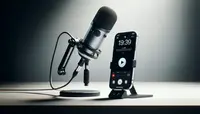
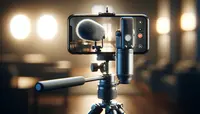
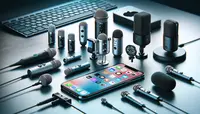

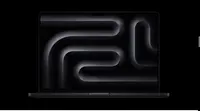

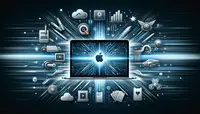

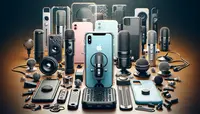
Post your comment